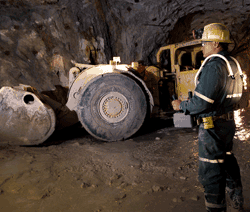Según la Resolución de Presidencia Nº 132-11-IPEN (09 de junio de 2011) el párrafo 611 de la Norma Técnica N° PR.002.2011 “Requisitos Técnicos y Administrativos para los Servicios de Dosimetría Personal de Radiación Externa” disponía:
"611. Los dosímetros con dosis mayores a 50 mSv y que pueden ser releídos, se conservarán durante un año." /1/

Mediante Resolución de Presidencia Nº 240-12-IPEN se ha modificado el párrafo 611 de la Norma Técnica N° PR.002.2011, que ha quedado redactado de la manera siguiente:
“611. En caso que se presenten reportes de dosis mayores a 50 mSv, el proveedor del servicio debe otorgar las facilidades que requiera específicamente la Oficina Técnica de la Autoridad Nacional para realizar la verificación del proceso”. /2/
La referida Norma Técnica fue aprobada el año 2011 por Resolución de Presidencia Nº 132-11-IPEN/PRES y contiene los requisitos administrativos y técnicos que deben cumplir los servicios de dosimetría externa de radiaciones, con fines de autorización por parte de la Oficina Tecnica de la Autoridad Nacional, siendo de aplicación para las entidades u organizaciones que llevan o vayan a llevar a cabo servicios de dosimetría personal de radiación externa a nivel nacional.
Teniendo en cuenta que el IPEN es el promotor de las bondades de la tecnología nuclear y quien contribuye con la protección de la población de los riesgos que involucran las radiaciones ionizantes, ha tenido, desde los inicios de la actividad nuclear en el país, una especial preocupación por la salud y bienestar de quienes están ocupacionalmente expuestos a radiaciones, por tal motivo realiza diversas acciones que permitan mantener e incrementar la cultura de prevención en materia de seguridad y salud, que comprende una serie de protocolos que deben ser estrictamente cumplidos por los respectivos usuarios.
Fuente:
/2/ Resolución de Presidencia Nº 240-12-IPEN.

